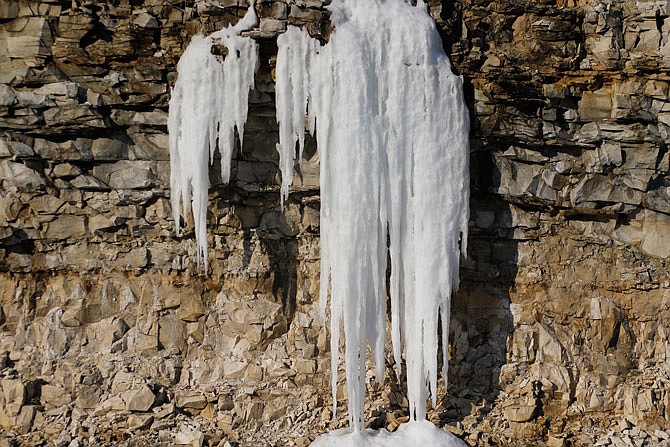Last week was a challenge to get through in Mid-Missouri thanks to record-breaking cold weather, and its effects are still being measured.
Local power suppliers are "ready to catch our breath" after the bitterly cold temperatures caused them to ask customers to conserve power consumption, officials said. Unlike in parts of western Missouri and other states, a number of factors helped keep rolling blackouts from occurring in Central Missouri.
Along with several rounds of measurable snow, temperatures dipped as much as 45 degrees below normal over the past week. Some days, high temperatures remained in the single digits, and low temperatures at night were below zero.
The way the national power grid is laid out, the state of Missouri is split with the state's western half on one part of grid and eastern half on the other, Ameren Missouri spokesperson Jenny Barth noted. Ameren's service area is on the eastern half.
"That's why you saw the different situations," Barth said. "Outages that we did have due to the cold weather were isolated, and we were able to get the power back on quickly. We didn't have any planned outages."
Ameren Missouri is still relying heavily on power generated from Bagnell Dam at the Lake of the Ozarks, as the Callaway County Nuclear Plant is still offline because of mechanical issues and wind generation facilities in northern Missouri have not been generating a great deal of power, Barth said.
Another reason Ameren is better prepared for situations like last week, Barth said, is the company's investment in its power distribution system.
Ameren announced Friday it has filed an update to its Smart Energy Plan and budget with the Missouri Public Service Commission. The $8.4 billion plan supports grid modernization efforts over the next five years. This is the third year of implementing the plan, which includes technology that can rapidly detect outages and restore service in seconds instead of hours, as well as new storm-resilient utility poles, power lines and underground cables designed to protect customers from outages during severe weather.
In 2019, Ameren performed work associated with the Smart Energy Plan in downtown Jefferson City. New underground equipment was installed throughout the area as part of the $1.2 million project and that included installing an approximately 2,900-pound switchgear on Jackson Street.
"Along with infrastructure investment, we'll continue to look at different forms of energy," Barth said. "We'll also take a look this week at what lessons they learned from this situation."
Electric cooperatives faced the same challenges to meet their customer needs.
Tom Howard, Callaway Electric Cooperative chief executive officer and general manager, credited the conservation efforts of the co-op's members, "or it would have been a different outcome," he said.
"We still have mechanical or steam generation, which is fueled by coal and natural gas, and that was what saved us during this event," Howard said.
Callaway Electric Cooperative gets its power from Associated Electric in Springfield, which has generation plants Missouri, Oklahoma and Arkansas. Central Electric Cooperative, based in Jefferson City, provides transmission and substations to get power to local co-ops such as Callaway.
"They performed flawlessly, and it's the only reason we came through without blackouts," Howard said. "We do have some renewable energy like wind generation, but that didn't help as much this time because the windmill motors froze and didn't produce power."
Howard said he believes in the need for energy diversity because "there's no single type that's perfect in generation."
"Sometimes, it could be steam from nuclear power, sometimes coal and other times natural gas," he said. "Other times, solar and wind power are good. While there have been called for changes to the nation's power grid, I think diversity of power generation is needed more."
Ameren Missouri and Callaway Electric Cooperative both will be looking at the financial impact of having to generate large amounts of power for prolonged periods of time, Barth and Howard said. Neither could say Friday what this could mean for customers' bills.

